Exploring the Macedonian old town of Ohrid – Macedonia
The first day in Ohrid old town
I walked only through the Christian part of the old town of Ohrid. From the Upper Gate (Gorna Porta) of the fortress, I went to the citadel of Tsar Samoil on the hilltop. From there, I descended through a pine forest to the church from Plaosnik. I wandered around tangled streets on my way to St. John’s Church from Kaneo. From there I came back to the town walking a suspended walkway over the waters of Lake Ohrid. I went to the cathedral of St. Sofia and then hiked up to the church of St. Bogorodica Perivlepta, from where I descended to the Hellenistic theater and further on to the main pedestrian street Car Samoil.
The rainy and cloudy morning forced me to stay in my room, where I wrote, read, and chatted with John – the American guest from the other room. John worked in Skopje as a bodyguard for one year after he had been doing the same thing in Nepal during the past year. After lunch, the sky lightened up and I went out to explore the Christian part of Ohrid’s old town.
Known as the town of 365 churches (one for each day of the year), the Ohrid region had been considered as the second Jerusalem. However, only 70 churches preserved from all of the 365 original ones. Listed as a UNESCO heritage site for its unique heritage values (natural and cultural), the town of Ohrid was the oldest and most complete architectural ensemble in the southeastern part of Europe. The old town formed between the VIIth and XIXth centuries on the shores of Lake Ohrid. It developed on archaeological remains that dated back from the Bronze Age to the Middle Ages. Thus, traces from different historical periods of the town (Antiquity, Byzantine, or 19th century) often appeared here and there.
The Christian quarter arbitrarily occupied the hilly part of the town and had houses and churches overlooking toward the lake. It spread from the Upper Gate of the old town to the lakeside corniche and to the sycamore tree from the square with fountain. I went once again to Tsar Samoil’s Citadel on the hill, from where the name of the town came (vo rid in Slavonic means ‘the fortress on the hill’). After that, I descend along the streets with villas and bohemian atmosphere, as well as with tourist stalls set up chaotically.
Christian basilicas dating back from the forth to the sixth centuries spread throughout the whole part of the old town. They sprawled among elegant and imposing villas, but also among shabby houses, sometimes precariously located on steep slopes. Cultural and ecclesiastical Byzantine center, Ohrid had countless churches, rich in large and colorful frescoes, mosaics, and original elements.
At Plaosnik, St. Clement Panteleimon church had been built on the ruins of a fifth-century basilica. Moreover, the ruins of the oldest Slavonic monastery preserved around the church. It was the first Slavonic university from the Balkans, founded by St. Clement and Naum in the nineth century as the Ohrid School, where they created the Cyrillic alphabet. From Plaosnik, I went down on streets with modest houses, that alternated with churches and chapels, to St. John’s Church in Kaneo. The famous 13th-century church suddenly unveiled itself on top of an isolated promontory, at the bottom of which azure waters thundered rocks.
From the tiny church, I descended to the Kaneo Bay, where restaurants with floating terraces and sunbeds on the beach charmed me right away. I sat down at Kaneo Restaurant, where I ordered a fish soup (which didn’t fill me at all). Consequently, I ordered another dish with fried fish (plashica – endemic fish from the Ohrid Lake). With the water gurgling around me, I drank a coffee while I was watching boats going here and there. Afterward, I left Kaneo and walked along the shore until I reached a wooden bridge that went parallel with the cliffs and soon arrived in another part of the old town.
I continued my walk along streets with both boats and cars parked all together. Then I reached the Cathedral of St. Sophia, which dated back to the 11th century. The cathedral had been a mosque during the Ottoman empire. As a church, it hosted unique frescoes with characters from both the Catholic and the Orthodox church. In the courtyard of the church, Mustafa eyed me, but I turned down his offer for a guided tour. Eventually, I had to promise him we’d have coffee the following day. Although he was Muslim, he guided tourists to the Christian churches of the town. Besides, he told me that he took from each religion what he considered best for him.
From the cathedral, I went up to the church of St. Bogorodica Perivlepta along narrow streets. There, the guard explained me the original 13th-century frescoes, which had a lot of blue. The guard added that one of the rich families of the town brought this color from Afghanistan. Nearby, the Hellenistic theater (later transformed into a Roman one) had been dug into the natural slope of the hill. Houses with balconies overlooking the scene naturally surrounded the theater. In addition, where I expected less, ruins of the Hellenistic town, Lychnidos (in Greek – the city of light), appeared at any corner of a street.
In the afternoon, I descended along winding streets among elegant villas as well as tiny chapels and reached the lakeside corniche, full of cafés and restaurants. The corniche ran parallel with the pedestrian street Car Samoil, flanked by massive and tall, imposing palaces, with wood at the edges of the white façades. The buildings along Car Samoil were hotels, restaurants or shops at the ground floor of the buildings. Most of the shops sold jewelry with the famous Ohrid pearls. A soldier from Russia brought the secret of the original pearl in 1924. Only two families of the town (the Talevi and the Filek) manually produced pearls from shells and scales of the plashica (an endemic fish from the Ohrid lake).
Next to the Robevi’s palace, I entered one of the seven workshops in the world that produced handmade paper. They claimed they used the original Chinese method from the second century for producing paper. A boy put a mix of ground wood with water on a sieve. It was possible to add spices or herbs in the composition for decoration. The boy placed the wet paper on a platform, then under a press, and finally out to dry for one or two days. Along the main street, other workshops carved in wood or produced decorative metal items. The owner of a souvenir shop knew where Bucharest was. He had stopped there on his way to Ukraine, from where he bought items from the communist epoch and sold them in his shop. In the evening, I walked along the lakeside and tried the water temperature with my feet.
The second day in Ohrid
I went to old quarter of the Turkish Bazaar. From the Upper Gate of the old town, I descended to Goce Delcev street. Afterward, I climbed the surrounding hills and went to see Kaneo again.
From the Upper Gate of the fortress (Gorna Porta), I followed a line of steps that cut the winding streets and descend directly to the Turkish bazaar. In a few minutes, I reached the Goce Delcev street, the main pedestrian street of the bazaar. There, the area with Ottoman vernacular architecture started, with its oriental restaurants and cluttered shops facing the noisy street. I noticed they sold painted pottery, similar with the Moroccan tajines. Restaurant owners tried to catch my attention and invited me to sit at their tables. Meanwhile, a psychopath spotted me and insisted on deleting the picture I took of him by mistake.
From the central square with sycamore (the oldest tree in town, grown at the entrance to the Turkish bazaar), one could see both mosques minarets and a discreet church uphill. During its development, the brick-architecture of old Ohrid influenced the Ottoman residential buildings (18th-19th centuries). Moreover, the geographical location of the town limited the space for building new houses. In consequence, this had determined the development of a maze of narrow and sloping streets. The pedestrian street Kliment Ohridski bounded the Turkish bazaar from the new town with communist buildings. However, as I climbed the neighboring hill, the cluttered Turkish houses dissolved, spread, and gradually transformed into the typical Ohrid villas.
Later, I went down to the small touristic harbor of the old town. There I watched how a boatman threw stones into the water and his dog swam to bring them back to his owner. A light rain began to fall but I still went to the beach-bar in Kaneo, where I enjoyed a Nescafe on a sunbed, under an umbrella though. I turned back to the Turkish bazaar, where I had lunch – baked beans, sausages (sudzjuk), and Turkish yogurt (ayran). It was still raining and cold, so I decided to go home. As I was writing in my room, the sky gradually cleared up and at any moment the muezzin began to sing the call to prayer.
Exploring the Macedonian old town of Ohrid is the diary about the days I spent in Ohrid town (you can find the version in Romanian at In jurul lacului Ohhrid, Macedonia – I). Its continuation, my second post can be found at Exploring the surroundings of the Ohhrid Lake. And here are all my Travel Diaries from Macedonia, the Balkan Countries (x6).
Have you been to Macedonia or plan to go there? Leave a comment below this post and tell me what you liked about Macedonia or what you’re interested to see there.
Want to subscribe to my travel diaries? Just leave your email in the subscription form below and you’ll be notified when I publish a new travel diary.
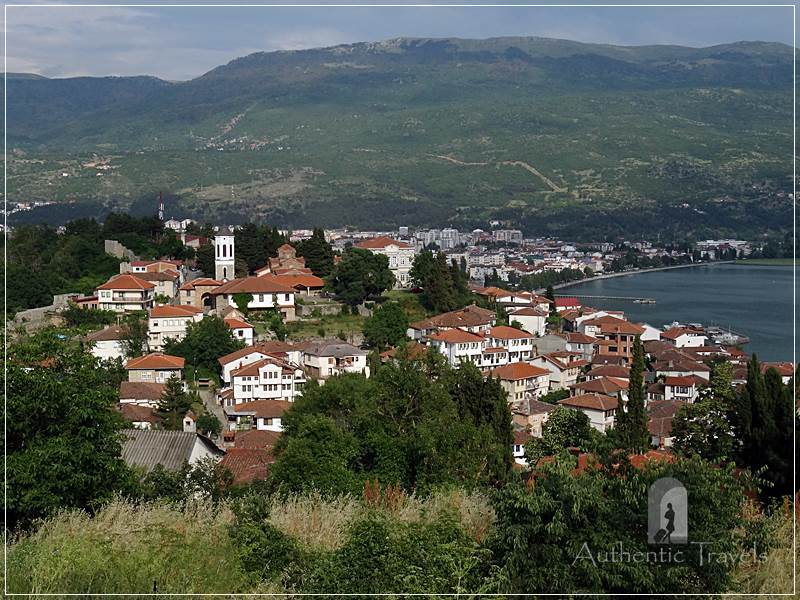
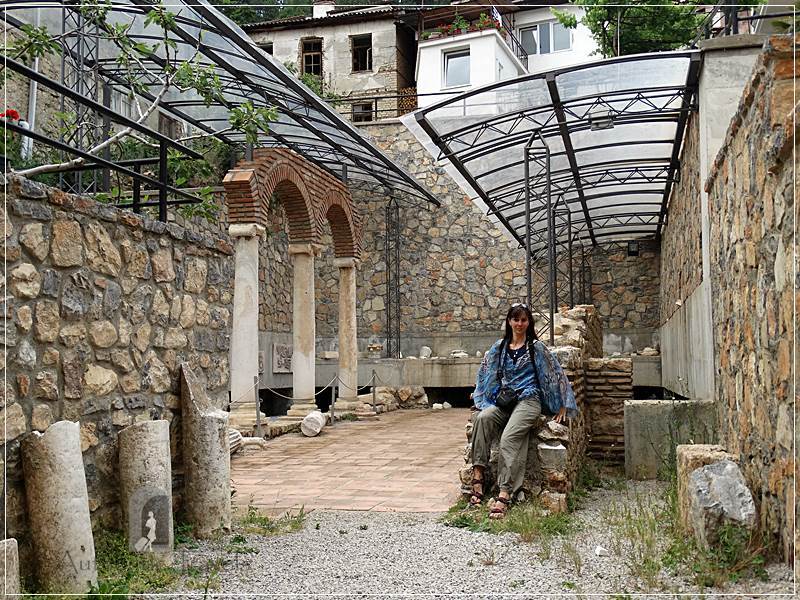
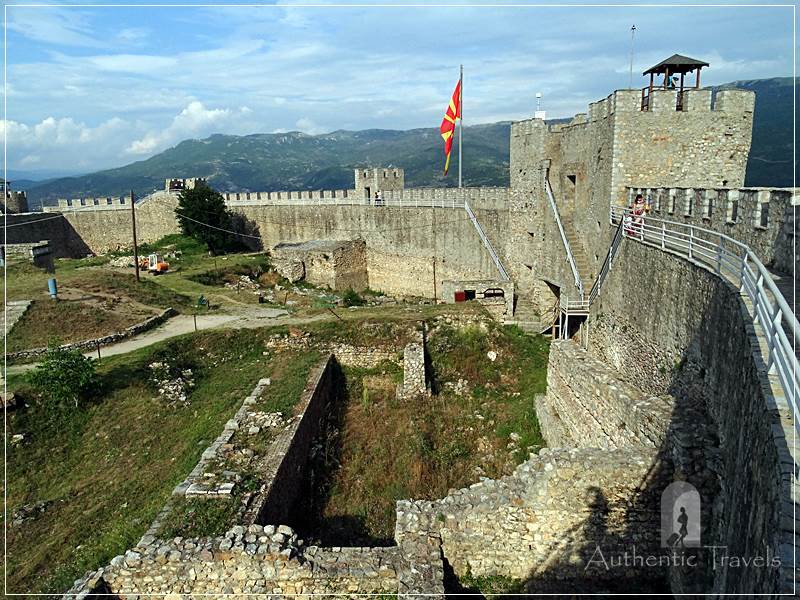
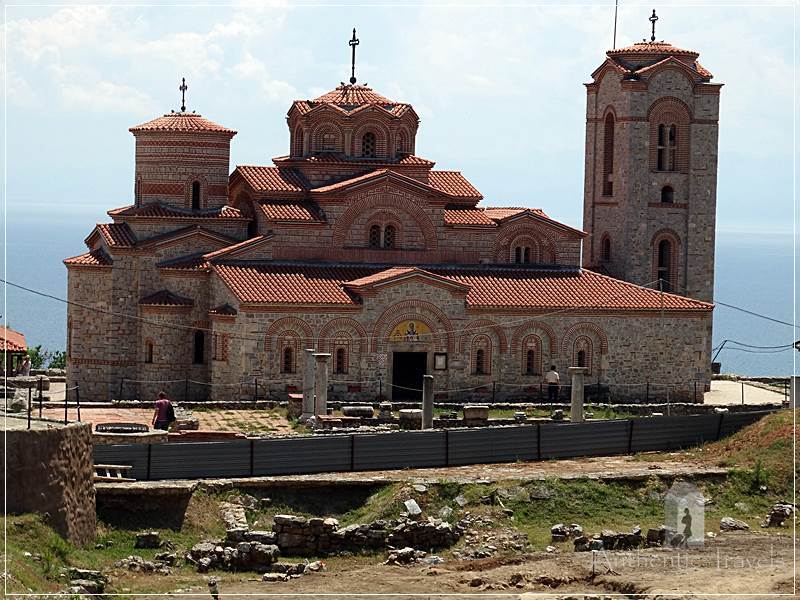
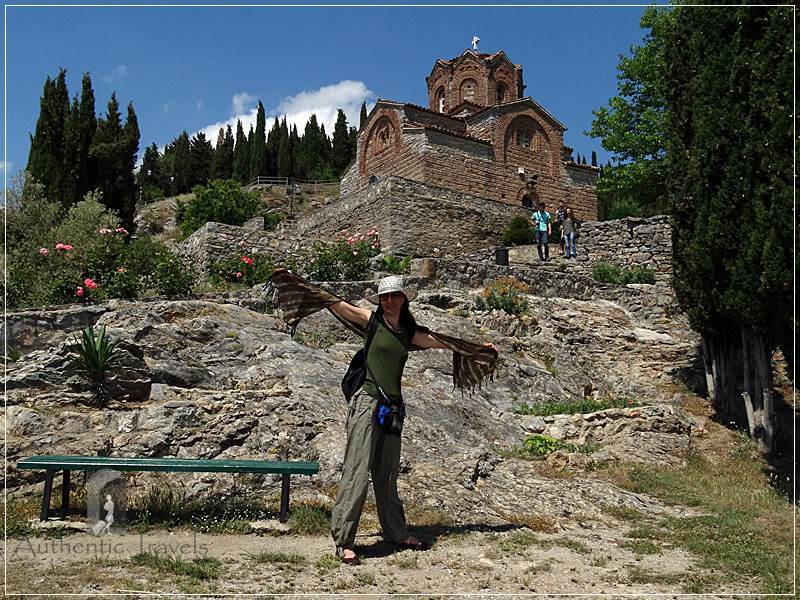
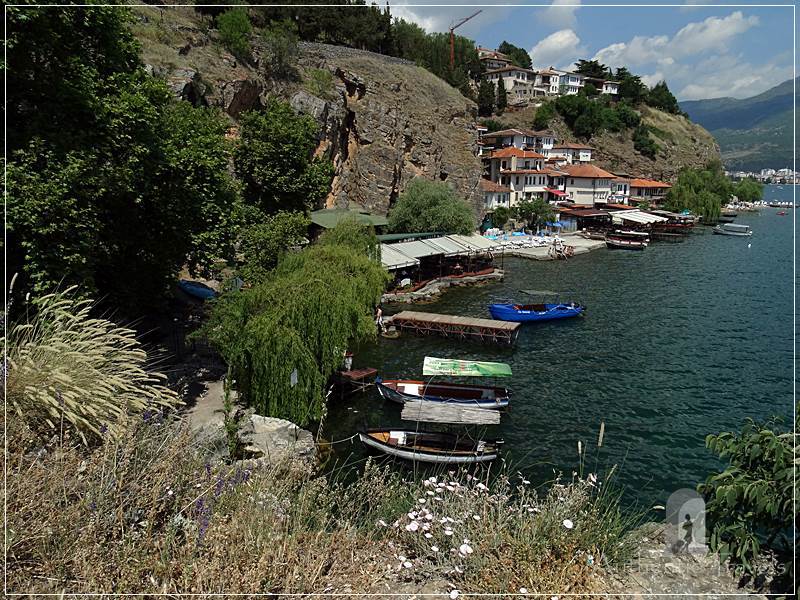
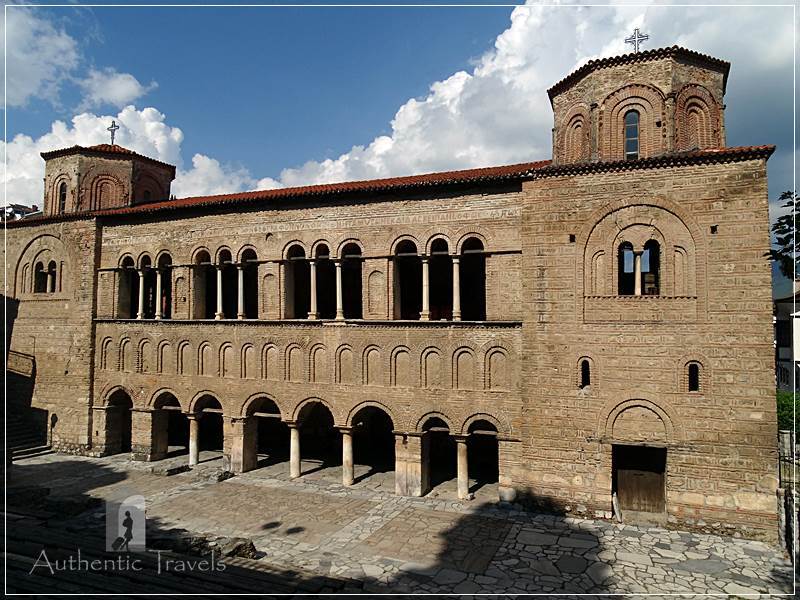
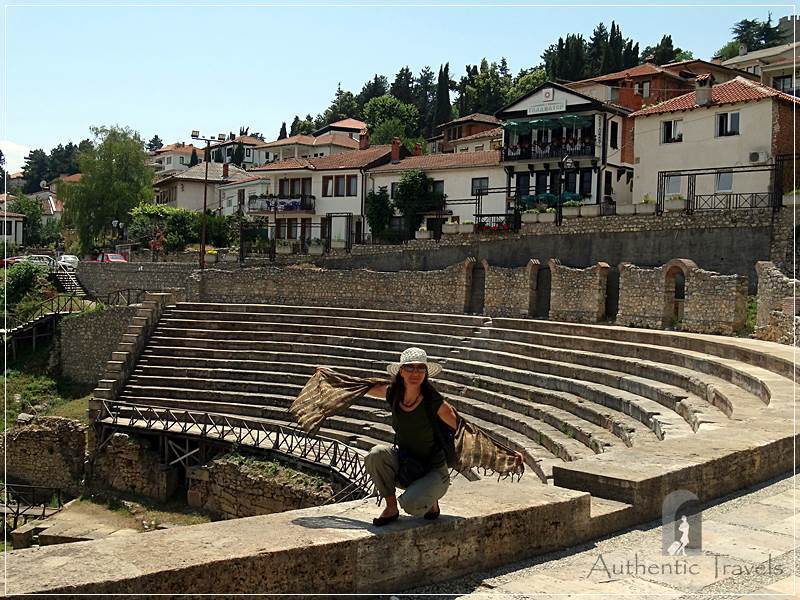
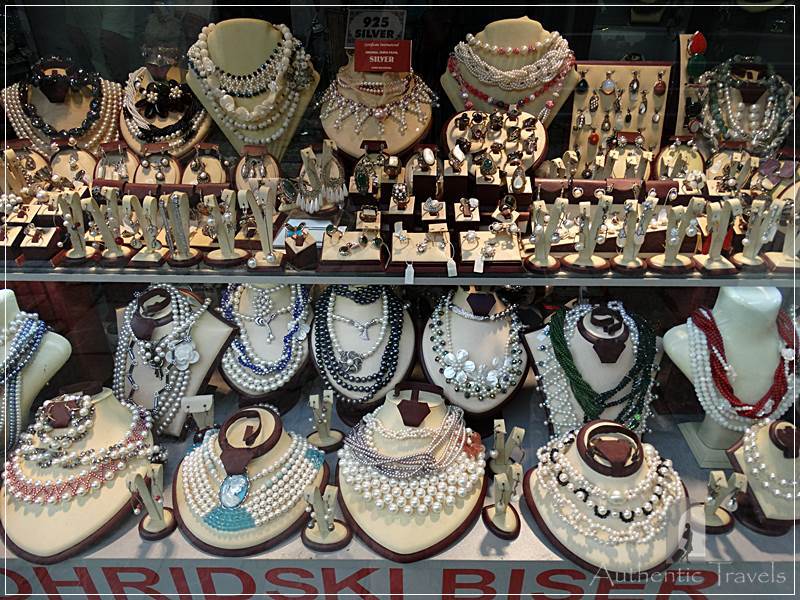
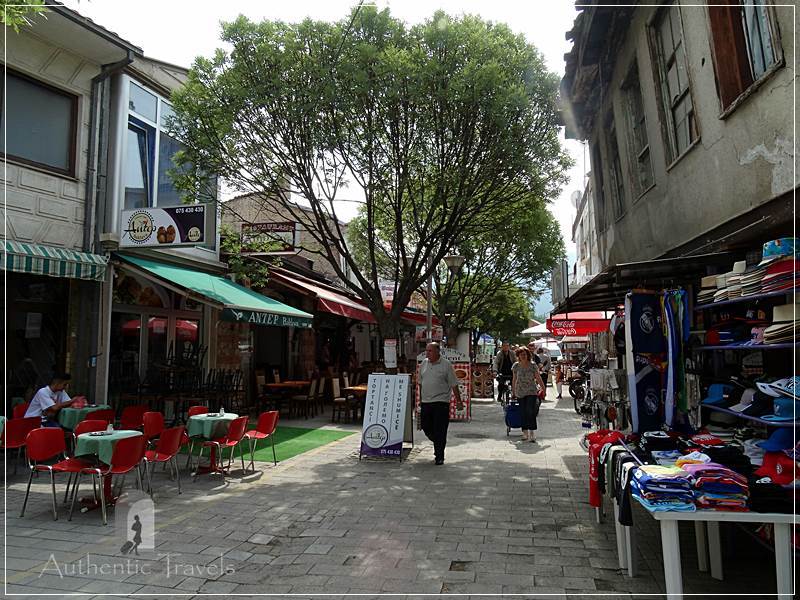
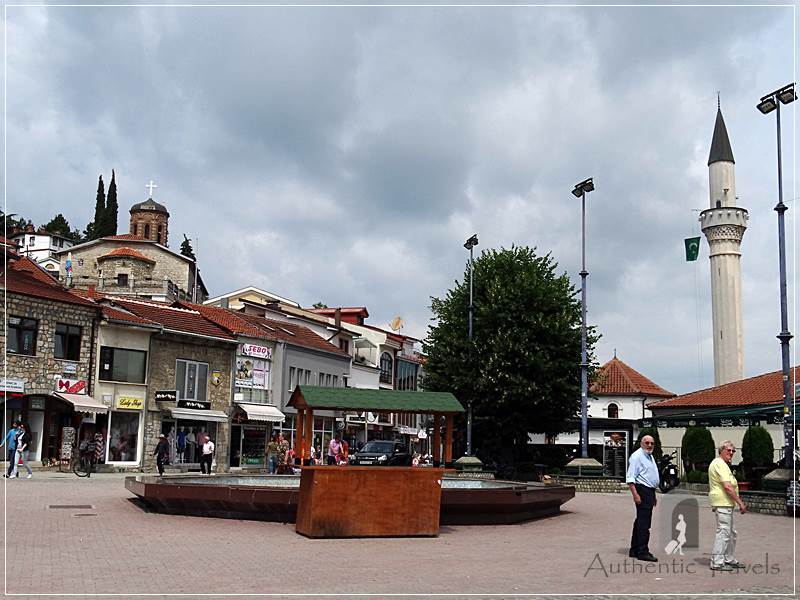
Oh how lovely. Really enjoyed your narration so I could see in the order that you saw, and feel like I was walking around with you. I have a friend who has been telling me to visit Macedonia for such a long time, and your post reminds me that I would love the history, the architecture, the views.
Macedonia is a good place to travel if you want to understand the Balkans. I live in Romania and our neighboring countries were still unknown to me.
I haven’t been to Macedonia yet… I’ve already traveled to Croatia, Slovenia and Serbia and I plan to visit Macedonia, Montenegro and Romania very soon 🙂 I’d like to go packaging. There are so many little town, like this one, with hundred of secrets to discover !
Let me know when you go back to the Balkans, or to Romania (I still live here). I am planning to continue my road trip through the Balkans this summer, so maybe we’ll meet in Montenegro. 🙂
Ohrid looks really interesting – I had no idea this place even existed. I loved how you described your walk, I’m bookmarking this and I’d love to visit Macedonia too.
I hope you will enjoy Ohrid lake as much a s I did.
Samuel’s fortress would be probably the first place that I would love to visit after Ohrid lake. The Roman ruins, some of the prominent churches and cathedral would also be interesting. A little bit of shopping in Turkish bazar for mementos would be a must too as I normally do whenever I visit a new place.
The Turkish bazaar is a great feature of the Balkans. I always love that Oriental atmosphere which, otherwise, is difficult to find elsewhere in Europe.
Macedonia is on my list to visit and now Ohrid is on my itinerary too. I liked that you described the order of where you visited. It gave a good insight and a good guide for when I make the visit too.
The truth is that it’s easier for me to remember the places if I write down that order.
I didn’t know Ohrid was known as the town of the 365 churches. There is so much history and different styles of architecture, it’s interesting that the Cathedral of St. Sophia had been a mosque during the Ottoman empire. Looks like you could part with cash buying the jewellery, did you get any pieces?
No, unfortunately, I didn’t buy any jewelry but it looked really great. Maybe next time when I will go there I will also buy something.
The Roman ruins look very beautiful I would love to see the old theater. I did not know that there were so many Roman ruins to explore in Macedonia. I’d also like to see the Plaosnik Church it looks incredible. Ohrid looks like a really interesting place to visit.
Ohrid has many layers of civilizations, from Romans to to medieval fortresses to Orthodox churches
Thanks for sharing another great view of Madedonia. It would be great to visit a city like Ohrid that is known for its 365 churches. I always love views from above of the red roofed buildings. The architecture looks varied and intricate. I am always fascinated by how far the Roman ruins spread. And that many are still quite intact like the amphitheater.
Well, if we better think, Rome and Italy were not so far from Ohrid.
Ohrid looks amazing! I love all the history and how you laid it out. It’s really neat to see things like the Roman Amphitheater then see Saint Jovani in Kaneo church. Plus all the modern architecture around it as well. It creates an amazing story! Thank you for sharing and I’m looking forward to visiting Ohrid sometime soon!
I hope that all this outbreak stuff will be over soon and we’ll be able to travel as much as we dream!
70 historic churches in a single town? Wow, no wonder its listed under UNESCO! The Byzantine centre reminds me much of the similar Byzantine churches I’ve seen in Greece. The town also has a Roman theater? Wow! I love the rich history of this place! Splendid. I should plan a trip to Ohrid. The history of Romans, Byzantines & Ottomons back to back is pretty similar to Athens as well. Ofcourse, historically it is all one & the same region.
Ofcourse, I should set aside a budget for those jewelry! Its just so gorgeous.
Yes, those jewelry are a nice gift to yourself and you deserve it.
Macedonia has been on my must-visit-list for its historical palces and architecture. It’s a pleasure to have a virtual tour of Second Jerusalem through this post. Did you say 365 churches? Made me look up the population of Ohrid and Woah… sounds like one church for every 100 peeps of the population. Fascinating!
Yes, Ohrid is also called the second Jerusalem.